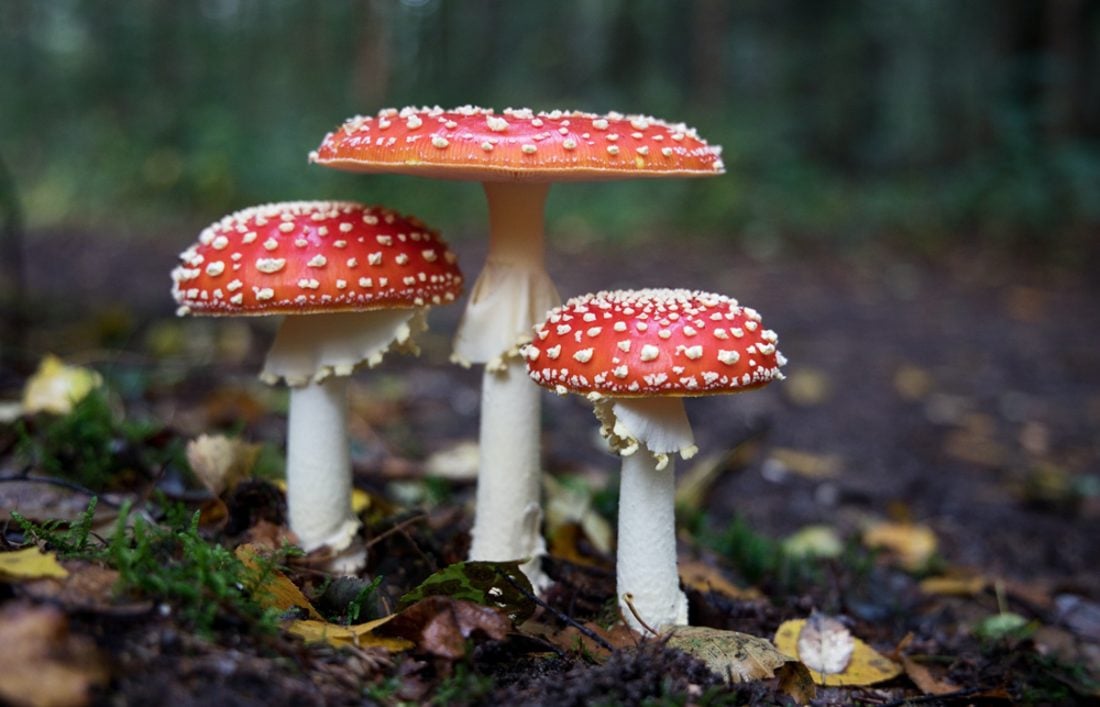Study Shows Mushrooms Can Learn, Make Decisions & Function as Individuals
We know that nature is alive, but how alive is nature..really? Well, I bet you didn’t know that mushrooms could possibly foster intelligence.

e. I once heard this disturbing statement about grass that gave me shivers.
The smell emitted from grass when it’s being cut is how the grass blades warn uncut grass that danger is coming. Now, this was an unusual statement, but whether it’s true, I don’t know. But this isn’t about the intelligence of grass, it’s about mushrooms. Can they learn, function individually, and can they make decisions? Intelligence – is nature much more conscious than we thought? Well, according to studies, mushrooms can learn things.
They can function as one unit or individual, and they can make decisions.
They are conscious of their surroundings. And when I speak of consciousness, I mean the ability to be sensitive and responsive. It’s the ability to be aware that astounds scientists as they study mushrooms. In the past, the ability to learn and make decisions was attributed to only larger species, namely animals. Later, plants and trees were discovered to communicate with each other, and now, even smaller species, hence mushrooms, are proving to have some sort of consciousness as well.
The question is: where is the threshold of awareness between the conscious and the unconscious being? Explaining the mushroom is complicated.
The fungi you see above ground are simply the reproductive organs of a much larger species.
The rest of the fungi spends its life underground. This part of the mushroom is in the form of microscopic filaments called ‘hyphae’. Colonies of hyphae, tubes filled with pressurized fluid, branch out within what’s called the mycelia.
The mycelia hunt for food and water beneath the soil or leaves.
They feed on wood, roots, dead insects, and other small animals. As the hyphae extend outward from the mycelia, it responds to the environment in different ways. Temperature, the availability of water, and other factors govern how the growth of the hyphae responds.
The hyphae can detect objects and grow around them, they can respond to environmental changes much like nerves in the human body. If the hyphae are confined to a tight spot, growth slows down as well. Although fungi may not think as the human mind does, it makes decisions according to many factors in its environment.
These factors cause the hyphae to grow in unique formations. In the paper Measurement of membrane potential in Neurospora published back in 1962, researchers C. L. Slayman and C. W. Slayman demonstrated that mushrooms negotiate the topography of whatever they grow on. For instance, when placed on microfabricated silicon wafers, the fungi can detect microscopic surface changes, like ridges or indentations. A mushroom has a memory as well. German mycologists found that fungi remembered extreme temperatures for a short period, allowing them to continue growing in the same way. At first, when exposed to extreme temperatures, the mycelia activated growth in a different area away from the temperature changes, in an entirely new colony of hyphae. When extreme temperatures were administered once more and then removed, the mycelia continued to grow in the same place as if nothing happened. It remembered the test in temperature and knew the outcome from before. However, this memory only lasted for 24 hours, as the mycelia were fooled by temperature changes again the next day, forming colonies elsewhere. Mycelia seem to be able to transmit information over wide areas. Filaments can travel to rotting wood, feed off the wood, and send the nutrients to the main form of the fungi.
These filaments send messages to the main mycelia when nutrition is found, and the mycelia decide whether to feed off the discovery.
The Fungi actually acts as a multi-cellular organism. In studies using radioactive isotopes, scientists learned that there is resource allocation going on.
The fungi remember and recognize previous sources of food and return to the source. This is an additional testament to its memory and hints at intelligence, memory, and special recognition. Also, competition between two separate mycelia from decomposer fungi indicates signaling when fighting for food. When fungi interact with living plants, the response can be either destructive or supportive. Pathogenic fungi evade the defenses of living plants and feed upon them while Mycorrhizal fungi penetrate tree roots and share water and minerals in exchange for food created by photosynthesis. This symbiosis depends on chemical communication between the plant and the fungi. This relationship dynamic is probably the source of the rumor that mushrooms and trees have a wide web of connections throughout the forest. While studying the behavior of other organisms doesn’t lift eyebrows, the investigation into mushroom intelligence does. But the intelligence, memory, and learning that fungi display cannot be ignored. So, the next time you see a mushroom, think of how intelligent it may be. Imagine the intricate networks of information being sent back and forth across distances you do not know. Although they may not think as we do, mushrooms just may have their own conscious operation. I think this is worthy of respect.
Read the full article at the original website
References:
- https://www.learning-mind.com/3-life-lessons-from-nature/
- https://www.learning-mind.com/expansion-of-consciousness-psilocybins-gateway-to-the-mind-well-being/
- https://www.learning-mind.com/animal-intelligence/
- https://www.ncbi.nlm.nih.gov/pmc/articles/PMC3405699/
- https://www.sciencedirect.com/science/article/pii/S1749461316300525
- https://pubmed.ncbi.nlm.nih.gov/14039333/
- https://www.sciencedirect.com/science/article/abs/pii/S1754504816000192
- https://academic.oup.com/plcell/article/29/10/2319/6100438
- https://www.learning-mind.com/tree-hugging-benefits/
- https://www.learning-mind.com/amazing-facts-about-the-psychology-of-learning-and-memory/
- https://www.learning-mind.com/author/sherrie/
- https://www.learning-mind.com/mushrooms-can-learn-study/
- https://www.learning-mind.com/pretending-to-be-your-friend/
- https://www.learning-mind.com/unrealistic-expectations-childhood/
- https://www.learning-mind.com/contact/
- https://www.amazon.com/dp/B08LTNJVTZ
